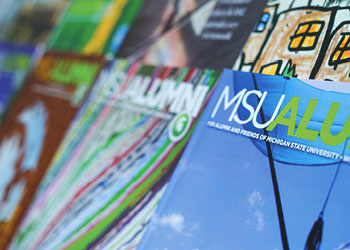People: Toichi Takenaka

Imagine a building that rises 3,300 feet--a higher elevation than any ski slope in Utah. It houses 135,000 people, contains its own sources of energy and water, and comes complete with schools, offices, shops, gardens, theaters and hospitals. High speed elevators and spiral monorails get you anywhere quickly within this futuristic city-tower. Welcome to Sky City 1000, a spectacular $31-billion project being developed by Takenaka Corporation, Japan's--and perhaps the world's--premier builders.
Toichi Takenaka, MBA '68, has been president and CEO of the company since 1980. He is a 17th generation descendant of the company's original founder some four centuries ago. Takenaka Corp. made its fame in Japan for building the Imperial Palace in Nagoya and Emperor Hirohito's home in Tokyo. But it is also known for having built very high quality buildings and complexes.
Takenaka has more than upheld the company's reputation for top quality and technological innovation; besides the concept of sky cities, which use new conical shell techniques and carbon fiber panels, his architects and designers have pioneered underwater factories, movable-ceiling domes, and a host of other futuristic concepts. A well-known business leader in Japan who golfs with the likes of Akio Morita, the founder and former chairman of SONY, Toichi remains one of MSU's most important and loyal alumni in the Pacific Rim.
In December he attended MSUAA events during the Coca Cola Bowl, which, interestingly, was played in the Takenaka-built Tokyo Dome--a 1,240,000-square-meters multi-purpose stadium and Japan's first 'air dome' structure. 'I think everyone agrees that the thinking and planning we do now will form the basis for society's leap into the 21st century,' he says. 'As a comprehensive design and construction firm we know that our work is as important as any in creating an urban environment for the next century.'
Sky City 1000, which will take 14 years to complete, remains only one of the company's many projects. His company's 1993 annual report shows that Takenaka was building, among many projects, a massive resort in Hawaii, a smaller sky city in Shiba, several skycrapers in Japan and other places, harborland development projects, an amazing 37-story 'crystal tower' in Osaka, warehouses, factories, aquariums, power plants, hotels, museums, and shopping centers.
Since 1973, the company has had an 'integrated design and building system' that emphasizes quality control. It has won numerous awards, including the 1979 Deming Prize--first time ever won by a Japanese company--and most recently the Japan Quality Control Medal. Says Toichi, 'Quality control starts with top management and works its way down through all levels of the company.'
Toichi says his company's global horizon will likely expand in the future, as well as its emphasis on the environment. The company's credo is QCDSE--which stands for Quality, Cost, (Timely) Delivery, Safety and Environment. As Toichi has stated, 'We will put quality of life and contribution to society ahead of simple gain.'
Speaking of quality of life, Toichi never goes anywhere without cleats. He has scaled the Japanese Alps through Nagano, and has plans to climb those in Europe. When he isn't climbing, he plays golf, a pastime he can now enjoy in courses built by his own company--most recently the magnificent Hyatt Regency Kauai property and the luxurious Westin Mission Hills Hotel and Resort in Palm Springs.